"Reel Cannon"
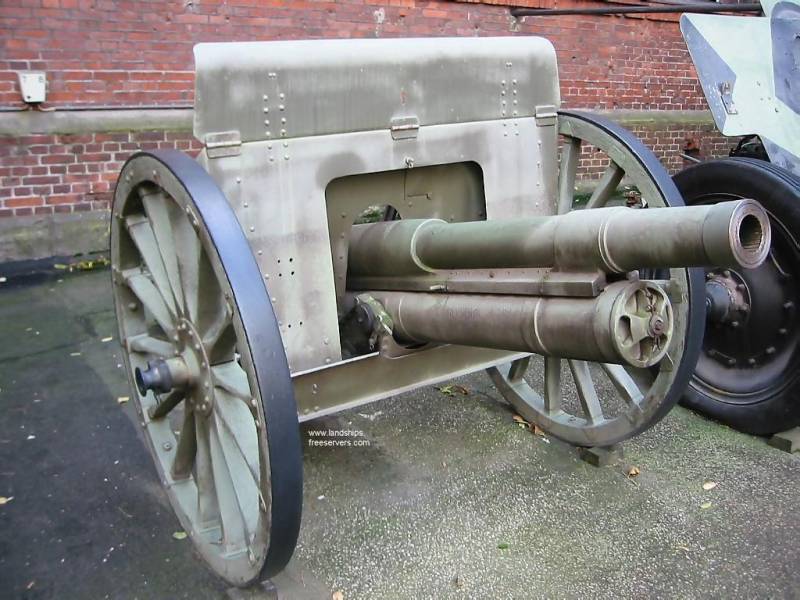
Cannon of the Putilov factory arr. 1902
Weapon World War I When in 1914 humanity staged the First World War on the planet, military affairs immediately made a sharp leap forward. And we have already told you about rifles and machine guns of this war. Now it has come to the most massive cannon of the Russian imperial army with a caliber of 76,2 mm. This gun had many nicknames, but one of them was ... "reel". Why?
Guns of the 1877 system
And it so happened that even before the First World War, the Franco-Prussian War broke out in Europe, in which such weapon novelties as mitrailleuses, Chaspeau rapid-fire rifles and armored trains were involved. However, the old artillery was used - the guns were rifled, but, as before, they were loaded from the muzzle.
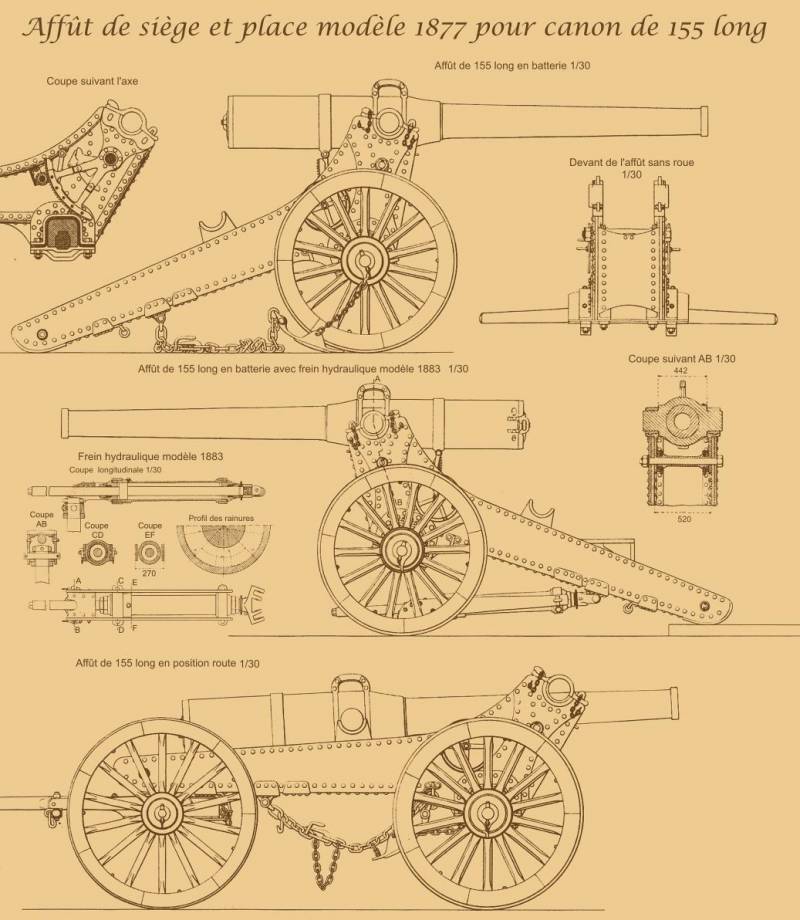
French 155 mm gun model 1877
Therefore, soon after its completion, the former opponents immediately began to create new guns. More powerful, more long-range and faster-firing. Breech-loading guns with a breech and a compactor designed by Bandzha were created. Moreover, its system turned out to be so perfect that it remains in a number of artillery systems to this day! But… the inertia of thinking didn’t go anywhere either, and having taken a big step forward, the gunsmiths immediately worked out two steps back. That is, they did not come up with any recoil devices on the gun itself, but placed triangular profile ramps behind its wheels, along which the gun after a shot, rolling back, rose up, and then again rolled down from them. This was not very convenient for the soldiers, but it was redeemed by the fact that the guns became much longer-range, and it was not difficult to aim them at the targets again. Although ... turn it around, some kind of colossus! In general, in 1877, at the same time in France and Russia, artillery systems were put into service ... of this year, including both 120 and 152-mm long-range siege guns. They were used, and very actively, in the Anglo-Boer War, and even then - exactly the same device 149-mm gun in the Italian army fought the entire First World War.
One gun, one projectile
However, such weapons - by the way, one of them can be seen in the Museum of the Russian Army in Moscow - were not very convenient in a field war. They were too heavy and took time to install. Therefore, the military had “half-caliber” guns in honor - 75-mm, which at the end of the 19th century were considered universal.
In addition, the military at that time for some reason decided that the coming war (and that it would certainly happen in Europe, few doubted even then!) Will be maneuverable and fleeting. And if so, then a corresponding gun was also required for it. Light enough to be carried by a couple of horses; rapid-fire, so that she could cover the advancing infantry and cavalry with shrapnel; and simpler in design.
The totality of such views on the use of artillery in a future war resulted in the concept of "one gun, one projectile." That is, the war was planned to be waged with just one main type of gun, and it, in turn, would have to shoot with just one type of projectile, which was chosen as shrapnel.
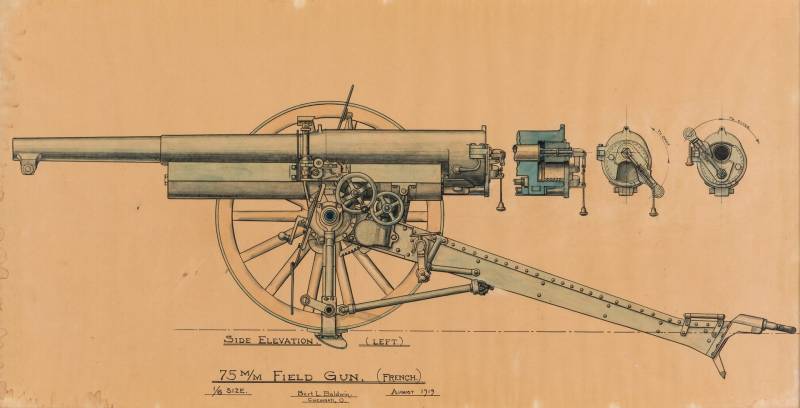
75 mm field gun by Puteaux and Duport
The French were so imbued with this idea that they were the first in Europe to create in 1897 a tool designed by Puteaux and Duport for it. Until now, all guns rolled back after firing. But this French gun, after firing a shot, remained motionless, only the barrel moved back from it. And moreover, at the same time, he also automatically opened the shutter at the gun! Then, located under the barrel, a spring knurler returned the barrel back. As a result of such a revolutionary innovation, a trained crew could shoot at an incredible speed for that time: 25 rounds per minute. Cartridge loading at the same time became impossible, and the French used a unitary cartridge in this gun, which combined the cartridge case with the charge and the projectile into a single whole. True, due to the very long rollback, even at the very end of the barrel, two wheels had to be placed to move along the recoil devices. However, they did not interfere with the shooting at all. The shells were used both high-explosive fragmentation and shrapnel, and they were just considered the most important. Moreover, they were also supposed to shoot at light field fortifications instead of high-explosive shells. To do this, the fuse with a tube on the projectile was set to the “on impact” position, after which the shrapnel projectile exploded only from hitting an obstacle. Naturally, if it was a parapet of a trench, then a point-blank blow with a charge of shrapnel carried it in all directions, and other light fortifications suffered in the same way. As for the shrapnel firing range, it was 6800 m.
The invention of the English General Shrapnel
Today, shrapnel projectiles are practically not used for shooting, but then, at the beginning of the 20th century, it was an extremely important tool for waging war. After all, the soldiers then practically did not try on the terrain and went on the attack at full height, with chains, and even with banners unfolded under the horn and drum. It is interesting that the English General Henry Shrapnel invented this type of projectile back in 1784, but it is clear that by 1914 it had already been greatly improved. Now it was no longer a core in which the bullets were mixed with gunpowder, but a pointed projectile filled with steel or lead bullets-balls (lead were considered bad because they often wrinkled when fired!). There was a simple timer in the head of the projectile, which counted the flight time and undermined the projectile in the air. Bullets from the “glass” (as the cylindrical part of the projectile was then called) were thrown out by a charge of black powder, and necessarily smoky, so that a cloud of smoke in the sky was easy to notice and adjust the sight on it.

"Motovki" at the parade
Naturally, it was simply impossible to get past such a gun, especially given the military ties between Russia and France. As a result, a very similar gun of the first model of 1900, and then of 1902, was adopted by us in Russia, where the caliber of the gun was changed from 75 to 76,2 mm. True, for some reason our shell turned out to be lighter than that of the French gun, but on the other hand, the firing range was higher, and the rate of fire was so high that in the army they called it a “reel”, so willingly she “swallowed” shells. She also had another nickname that emphasized her effectiveness: “death scythe”! The weight in the combat position of the French gun was 1100, and ours was 1092 kg, so their maneuverability was almost the same. Interestingly, on the first samples, our gun did not have a shield. So in those Soviet films where she was made a participant in the revolution of 1905-1907 and was shown with a shield at the same time, you need to keep in mind that this historical error! Shields in a number of regiments were not installed until the summer of 1914!
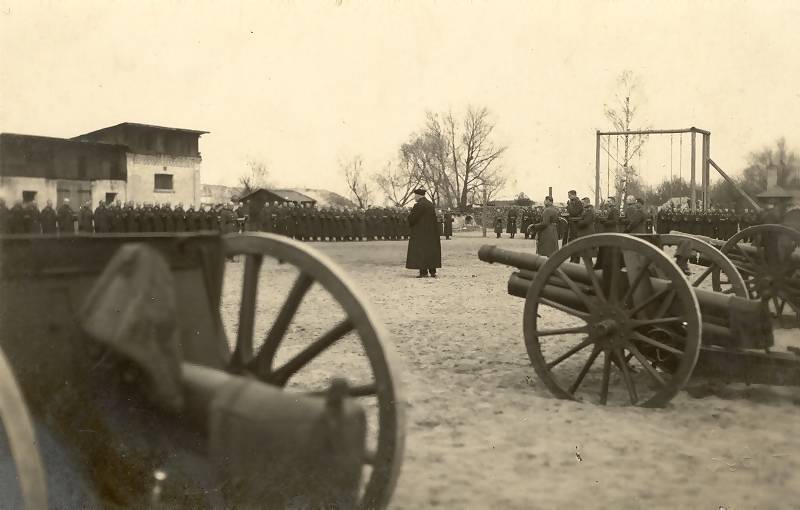
The battery is preparing to go to the front
In the cinema, as in ... the cinema!
What was bad was that we did not have good shells for such a good gun. That is, there was shrapnel (even more than the expected consumption rate was prepared for 76,2-mm guns of such shells by the beginning of the war), but it turned out to be pointless to shoot trenches and barbed wire fences with shrapnel. There were not enough high-explosive shells, and it was necessary to shoot at the enemy fortifications with shrapnel, set "to strike", only these improvised land mines did little harm to them. His firing distance was also too short in terms of burning time: it was impossible to shoot further than five kilometers from our cannon, and it was solely due to the fault of the projectile itself, and not the gun. And so - yes, in all respects it was an excellent tool! Here are just such "little things" should be known and remembered by military consultants of both our Soviet and modern Russian cinema. And then a command is heard on the screen: “The tube ... such and such!”, And for some reason the projectile explodes on the ground, and not in the air! Then you should have commanded like this: “Landmark ... rear sight to the right - two. Pipe - on the blow! ”, But in the cinema, all this, as a rule, does not happen, and why, alas, it is not known.
In 1930, the barrel of the gun of the 1902 model was noticeably lengthened, and in this form it fought in the Great Patriotic War.
Everything from our "broad soul"!
We often say that tsarism, they say, was to blame for the economic backwardness of Russia, and therefore we answered 10 German shots with one! And all this is true, only this proportion refers to the shells of heavy guns, which were few in the Russian army, but the "three-inch" shells came in sufficient quantities. Another thing is that the notorious human factor played its role here.
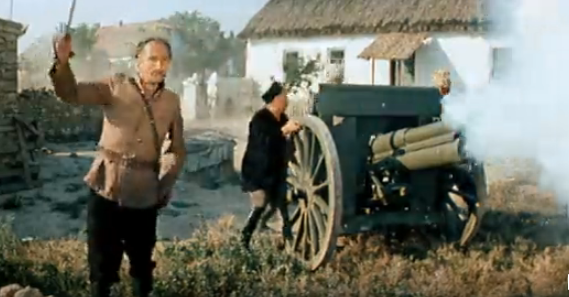
"Motovka" is firing. Still from the movie The Elusive Avengers (1966)
The army commanders were too “consumeristic” about artillery materiel, which is why applications for firing at the enemy are full of strange phrases that are not recorded in any charters: “two hours of drum fire","hurricane fire" and even… "fire to red heat"! One can imagine what the gun turned into after firing from it until "red heat”, and many commissions pointed to this, but without much success. It is clear that with such a careless attitude towards guns, no matter how much they are produced, they will still not be enough, just like shells, if they are fired for hours with “drum fire”. It is clear that if the Russian army had heavy and very heavy artillery, the load on the "reel" cannons could be much less, but what was not, was not there almost until the very end of the war. It was with heavy guns that they would then punch holes in the walls of barbed wire encircling the enemy's trenches, but ... that would be a completely different story.
Information